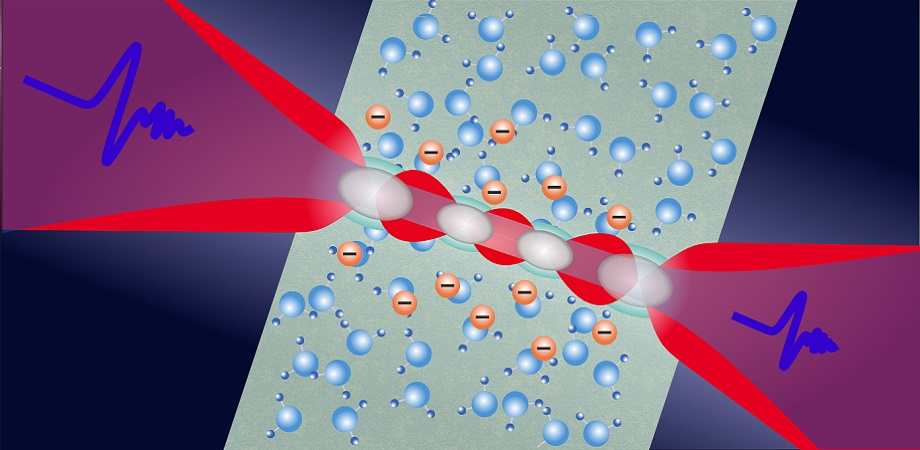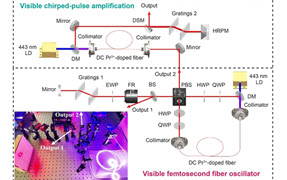THz spectroscopy tracks electron solvation in photoionized water

Photoionization of water involves the migration and solvation of electrons, with many transient and highly active intermediates. The process results in a large blue shift in the absorption spectrum, from the THz or gigahertz region to the visible range. While the behavior of low-density quasifree electrons excited by small pump power density has been investigated extensively, we still know little about the transient evolution of photoexcited plasma in liquid water. Valuable insights were recently provided by an international research team in a study published in Advanced Photonics.
According to Liangliang Zhang, physics professor at Capital Normal University in Beijing and one of the senior authors on the study, the physical mechanism of plasma evolution on the ultrafast sub-picosecond scale in liquid water is considered as an extension of the theory of gas plasma. But laser-induced plasma in liquid water is accompanied by more complex and stronger nonlinear effects than those in gas, since water has a higher nonlinear coefficient, a lower excitation threshold, and a higher electron density. These differences promise the possibility of unlocking new technologies and applications, encouraging researchers to explore the potential physical mechanism of photoexcited plasma in liquid water.
Water solvent electrons?
Zhang's team induced plasma in a stable free-flowing water film by using 1650-nm femtosecond laser pulses. They focused these intense terahertz (THz) pulses to probe at the sub-picosecond scale the temporal evolution of quasifree electrons of laser-induced plasma in water. THz wave absorption with a unique two-step decay characteristic in the time domain signature was demonstrated, indicating the significance of electron solvation in water.

(a) Diagram of the experimental system. (b) THz time-domain waveforms in liquid water without optical pump (black line) and under the maximal absorption caused by the formed plasma (red line). (c) Transient evolution curve of THz wave absorption by plasma in water with the pump energy of 90 μJ/pulse. (d) Black points indicate the peak quasi-free electron density with different pump pulse energies. The orange points show the relationship between the solvation ratio and the pump pulse energy at the equilibrium state.
Using the Drude model combined with the multilevel intermediate model and particle-in-a-box model, the researchers simulated and analyzed the quasifree electrons to obtain key information such as the frequency-domain absorption characteristics and solvation ratio. Remarkably, as the quasifree electron density increased, the traps related to the bound states appeared to saturate, resulting in a large number of quasifree electrons that cannot be completely solvated. According to Zhang, "This work provides insights on the fundamental aspects of the charge transport process in water and lays a foundation for further understanding of the physicochemical properties and transient evolution of femtosecond-laser-pulse-excited plasma in water."
Read the original research article by Yong Tan et al., "Transient evolution of quasi-free electrons of plasma in liquid water revealed by optical-pump terahertz-probe spectroscopy," Adv. Photon. 3(1), 015002 (2021), doi 10.1117/1.AP.3.1.015002



